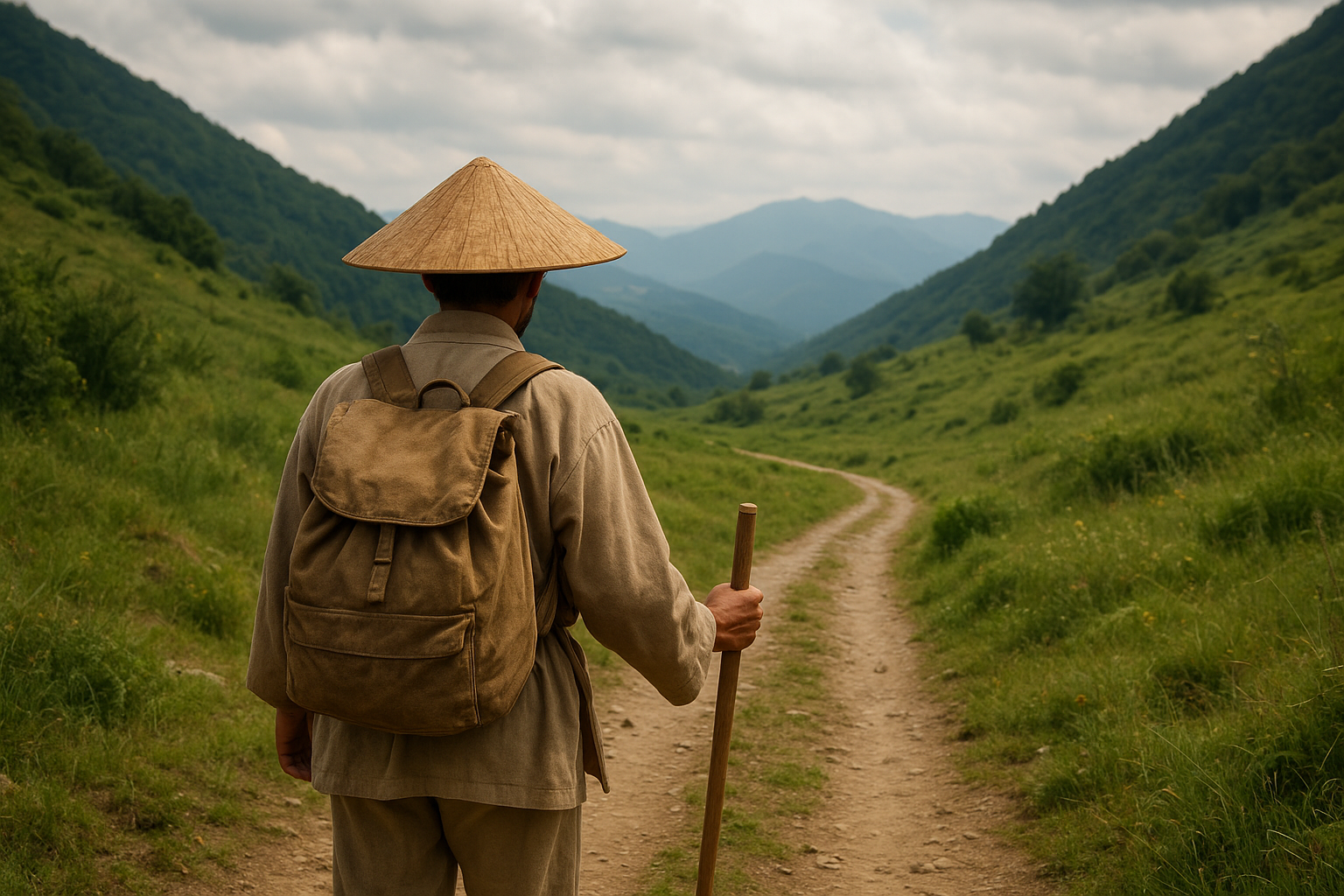Dao of the Drifting Leaf: Trusting Nature’s Course
In an era marked by rapid technological advancements and an increasingly fast-paced lifestyle, the age-old philosophy of Daoism offers a refreshing perspective on how one can live harmoniously with the natural world. Central to Daoism is the concept of wuwei, or effortless action, which emphasizes aligning oneself with the natural flow of the universe. A compelling analogy often used to illustrate this principle is the metaphor of the drifting leaf, a poetic symbol for trusting nature’s course.
The Essence of Daoism
Daoism, also spelled Taoism, is an ancient Chinese philosophy and religion that emphasizes living in harmony with the Dao, which can be translated as “the Way”. Laozi, the legendary figure often credited with founding Daoism, is famously known for the Tao Te Ching, a fundamental text on Daoist thought. The text offers profound insights into achieving balance and harmony within oneself and with the environment.
“Nature does not hurry, yet everything is accomplished.” — Laozi
This quote encapsulates the core of Daoism – the idea of achieving through non-action, letting things unfold in their own time, and trusting the natural order of the universe.
The Drifting Leaf Metaphor
Imagine a leaf drifting lazily along the surface of a stream. It flows without resistance, moving gracefully wherever the current takes it. This image is at the heart of the Daoist approach to life: letting go of rigid plans and instead embracing the spontaneity of existence.
- Acceptance: Just as the drifting leaf accepts the current, individuals practicing Daoism learn to accept the circumstances of life. Acceptance doesn’t mean passivity, but rather a profound understanding that fighting against forces beyond one’s control only leads to unnecessary suffering.
- Flexibility: Like the leaf that bends and adapts to obstacles in its path, a Daoist mindset encourages flexibility and resilience. Adapting to life’s challenges with grace and ease allows for personal growth and inner peace.
- Harmony with Nature: The natural world operates on principles of balance and harmony, and the drifting leaf is a seamless part of this system. Nature itself is a guide, teaching us the benefits of aligning our lives with its rhythms.
Applications in Modern Life
Applying the principles of the drifting leaf to modern life can bring profound changes in how we perceive success, manage stress, and engage with the world around us.
- Redefining Success: In a society that often equates success with wealth and power, the Daoist perspective encourages a broader definition that includes inner peace and happiness. Trusting the process and focusing on the journey rather than the destination can lead to a more fulfilling life.
- Stress Management: By adopting a Daoist approach, individuals can manage stress more effectively. Instead of resisting stressors or trying to control every outcome, one can learn to flow with life’s changes, reducing anxiety and tension.
- Environmental Awareness: The philosophy promotes a deep respect for nature. By understanding and respecting the interconnectedness of all life, individuals can make more sustainable and environmentally-conscious choices.
Challenges and Critiques
While the Dao of the drifting leaf offers a compelling way to engage with life, it is not without its challenges. Critics argue that an overly passive approach may lead to inaction in the face of injustice or oppression. Balancing acceptance with action is crucial, and it’s important to discern when to go with the flow and when to intervene actively.
Despite these challenges, the principles of Daoism offer timeless wisdom. As society looks for ways to cope with the stress of modern living and environmental degradation, the metaphor of the drifting leaf provides a valuable lesson in the art of letting go and trusting the natural course.
Conclusion
In embracing the Dao of the drifting leaf, individuals invite peace and balance into their lives. By moving beyond the frantic pace set by societal norms and learning to flow with life’s currents, one can discover a deeper, more meaningful existence. As Laozi expressed, the most profound transformations are achieved without force. In trusting nature’s course, we find our own path to harmony and happiness.

